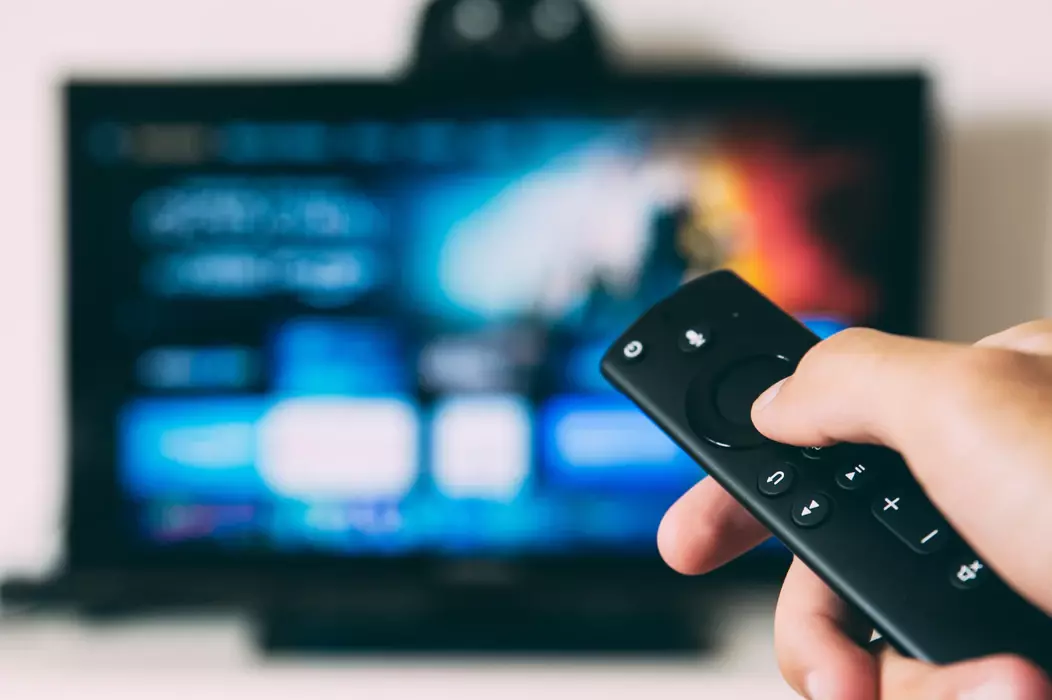Library
by Dr. Levi A. Reiter
What Is An Audiologist?
Audiologists are healthcare professionals who evaluate, diagnose, treat, and manage hearing loss and hearing conditions like tinnitus and balance disorders. An audiologist holds a minimum of a Master's degree in Audiology. Professionals seeking education in Audiology who do not currently hold a Master’s degree must now pursue a Doctoral degree in Audiology (Au.D). Audiologists must be licensed in the state where they practice, and are regulated by the Division of Consumer Affairs.
An audiologist may be awarded the Certificate of Clinical Competence in Audiology by the American Speech-Language-Hearing Association (ASHA), otherwise known as the CCC-A. With additional training and expertise, the audiologist may receive the honor of Fellow, which is bestowed by the American Academy of Audiology (AAA).
What Types Of Tests And Treatments Do Audiologists Perform?
Common services and treatments provided by an audiologist include:
- Diagnostic hearing tests and evaluations
- Audiologic evaluations
- Hearing aid fitting and consultation
- Hearing aid repairs and maintenance
- Pediatric hearing loss detection and treatment
- Hearing conservation and protection programs
- Earmold and earplug fitting and consultation
- Musicians earplugs and monitors
- Tinnitus treatment programs
- Dizziness and balance testing and treatment
- Ear or hearing-related surgical monitoring in hospital settings
- Hearing rehabilitation and auditory training
- Assisting in cochlear implant programs
- Insurance billing for medically necessary diagnostic testing and hearing aids, when patients have policies that cover these benefits
How Do I Know If I Have Hearing Loss?
If you think you or a loved one may have hearing loss, you are not alone. Oftentimes people notice signs of hearing loss but do not take the steps to get it treated right away. Typically, it takes people an average of seven years to seek treatment. You may have hearing loss if:
- You hear people speaking but you have to strain to understand their words.
- You frequently ask people to repeat what they said.
- You don’t laugh at jokes because you miss too much of the story or the punch line.
- You frequently complain that people mumble.
- You need to ask others about the details of a meeting you just attended.
- You play the TV or radio louder than your friends, spouse and relatives.
- You cannot hear the doorbell or the telephone.
- You find that looking at people when they speak to you makes it easier to understand.
- You miss environmental sounds such as birds or leaves blowing.
- You find yourself avoiding certain restaurants because they are too noisy, or certain people, because you cannot understand them.
- You hear a ringing sound in your ears, especially when it is quiet.
What Causes Hearing Loss?
Hearing loss can be due to several factors such as the aging process, exposure to loud noise, medications, infections, head or ear trauma, congenital (birth) or genetic factors, diseases, as well as a number of other causes. Recent data shows that about 20 percent of adults in the United States (48 million) report some degree of hearing loss. Hearing loss often occurs gradually throughout a lifetime.
How Is Hearing Loss Diagnosed?
If you have any symptoms of hearing loss, you should see an audiologist to have a formal hearing evaluation. This hearing test, or audiologic evaluation, is diagnostic in nature and allows the audiologist to determine the type, nature and degree of your hearing loss. Your sensitivity, acuity and accuracy to speech understanding will be assessed as well. Your audiologist may also test for speech understanding at different volume levels and in different conditions, such as noise, to provide an indication as to how successful of a candidate you will be for hearing aids.
The hearing evaluation will also include a thorough case history and a visual inspection of the ear canal and eardrum. Additional tests of middle ear function may also be performed. The results of the evaluation can be useful to a physician, if the audiologist believes your hearing loss may benefit from medical intervention.
Results of the hearing evaluation are plotted on a graph called an audiogram. The audiogram provides a visual view of your hearing test results across various pitches or frequencies, especially the ones necessary for understanding speech.
The audiogram and results from your speech understanding tests are used to create a prescription by which hearing aids are programmed, if necessary.
What Are The Different Degrees Of Hearing Loss?
After you undergo a hearing evaluation, the results are plotted on a chart called an audiogram. Loudness is plotted from to bottom. The of the graph is very quiet and the bottom of the graph is very loud. Frequency, or pitch, from low to high, is plotted from left to right. Hearing level (HL) is measured in decibels (dB) and is described in general categories, not by percentages. The general hearing loss categories used by most hearing professionals are as follows:
- Normal hearing (0 to 25 dB HL)
- Mild hearing loss (26 to 40 dB HL)
- Moderate hearing loss (41 to 70 dB HL)
- Severe hearing loss (71 to 90 dB HL)
- Profound hearing loss (greater than 91 dB HL)
What Are The Different Types Of Hearing Loss?
There are four types of hearing loss:
- Sensorineural hearing loss: When the problem is in the inner ear, a sensorineural hearing loss is the result. This commonly occurs from damage to the small hair cells, or nerve fibers, in the organ of hearing. Sensorineural hearing loss is the most common type of hearing loss and accounts for more than 90 percent of hearing loss in all hearing aid wearers. The most common causes of this hearing loss are age-related changes and noise exposure. Loss may also result from disturbance of inner ear circulation, increased inner ear fluid pressure, or from disturbances of nerve transmission. There are many excellent options for the patient with sensorineural hearing loss.
- Conductive hearing loss: When there is a problem in the external or middle ear, a conductive hearing impairment occurs. Conductive hearing loss occurs when sound is not conducted efficiently through the ear canal, eardrum, or tiny bones of the middle ear, resulting in a reduction of the loudness of sound that is heard. Conductive losses may result from earwax blocking the ear canal, fluid in the middle ear, middle ear infection, obstruction of the ear canal, perforation (hole) in the eardrum membrane, or disease of any of the three middle ear bones. All conductive hearing losses should be evaluated by a physician to explore medical and surgical options.
- Mixed hearing loss - When there are problems in the middle and inner ear, a mixed hearing impairment is the result (i.e. conductive and a sensorineural impairment).
- Auditory neuropathy spectrum disorder (ANSD): The least common hearing impairment is ANSD. This type of loss requires more in-depth diagnostic testing, including a hearing evaluation with pure tones, otoacoustic emissions (OAEs) and auditory brainstem response (ABR) testing. In this type of hearing loss, the nerve fibers in the organ of hearing typically appear to be functioning well, but a breakdown of the information occurs along the pathway to the brain. A person may still have normal hearing to sounds, but the sound is not encoded properly at the brain. This type of hearing disorder is diagnosed more often in children, due in part to newborn hearing screenings that use automated ABR equipment and routine speech screenings by pediatricians and school systems, but can be present in adults as well.
What Are The Signs Of Hearing Loss In Children?
Hearing loss in children can occur at any time in life from other acquired factors such as ear infections, head trauma, certain medications, and genetic factors. You may suspect your child has a hearing loss if you observe any of the following:
- Failed newborn hearing screening
- Delays in speech and language acquisition, including baby babbling
- Frequent ear infections
- Not startling to loud sounds
- Not turning to the location of sounds after six months of age
- Difficulty following verbal directions
- Daydreaming in many situations
- Concerns by school teachers or failed school hearing screening
- Loud volume on the TV or radio
- Complaints from the child that they cannot hear
- A pediatric audiologist is trained to test children of all ages. Any symptom of hearing loss in children should be addressed promptly so that speech, language and academic development are not delayed or impacted.
What Style Of Hearing Aid Do I Need?
There are many types of hearing aids today, and the style or device is dependent upon the user's individual needs. There are in-the-ear styles as well as behind-the-ear styles. Also, hearing aid technology has advanced, with many new and improved options from which to choose.
Hearing aids are available in many different sizes and styles, thanks to advancements in digital technology and miniaturization of the internal components. Many of today's hearing aids are considered sleek, compact, and innovative - offering solutions to a wide range of hearing aid users. When selecting a style of hearing aid, the following should be considered:
- The type/degree of the hearing loss
- Power requirements
- Manual dexterity and visual abilities
- Budget
- Cosmetics and aesthetics
- Skin sensitivities
- Anatomical and medical considerations
What Are Assistive Listening Devices (ALDs)?
People with all types and degrees of hearing loss can benefit from an assistive listening device (ALD). Since the microphone of a typical hearing aid is worn on or behind your ear, its ability to enhance the talker-to-background-noise ratio is limited. However, ALDs are designed to increase the loudness of a desired voice, such as a radio, television, or a public speaker, without increasing the background noise. This is because the microphone of the assistive listening device is placed close to the talker or device of interest, while the microphone of the hearing aid is always close to the listener.
ALDs include alarm clocks, TV listening systems, telephone amplifying devices, and auditorium-type assistive listening systems. Many newer devices are small, wireless, and compatible with a person’s digital hearing aids. Alarms and other home ALDs may be small devices that are placed discreetly on tables, next to the TV, or on the wall.
What Is Tinnitus?
Tinnitus is a common disorder affecting over 50 million people in the United States. It is often referred to as 'ringing in the ears,' although some people hear hissing, roaring, whistling, chirping, or clicking. Tinnitus, often called head noise, is not a disease, but a symptom of another underlying condition of the ear, auditory nerve, or elsewhere. Tinnitus can be intermittent or constant, with single or multiple tones. Its perceived volume can range from very soft to extremely loud.
What Causes Tinnitus?
The exact cause of tinnitus is not known in every case. However, there are several likely factors which may cause tinnitus or make existing head noise worse. These include:
- Noise-induced hearing loss
- Wax build-up in the ear canal
- Certain medications
- Ear or sinus infections
- Age-related hearing loss
- Ear diseases and disorders
- Jaw misalignment
- Cardiovascular disease
- Certain types of tumors
- Thyroid disorders
- Head and neck trauma
How Is Tinnitus Treated?
Generally, most patients will not need any medical treatment for tinnitus. There are several treatments and measures to help with the management of tinnitus including:
- Listening to a fan or radio
- Tinnitus-masking devices
- Biofeedback training
- Avoidance measures
- Avoidance of certain medications
- Hearing aids, if the listener also has a hearing loss
If these measures do not work, there are several medications that have been utilized to suppress tinnitus. Some patients benefit with these drugs and others do not. Each patient has an individual response to medication, and what works for one patient may not work for another.
Audiologist Versus Hearing Aid Dispenser: What Is The Difference?
There are vast differences in the professional roles in diagnosing and treatment of hearing loss. It is still common today for someone to get screened, tested, or fitted with a hearing aid by someone and still not know what qualifications that person had. How do you know who you can trust? An important distinction to understand when treating your hearing loss is the difference between an Audiologist and a hearing aid dispenser. An Audiologist is a Doctor of Audiology who is extensively trained in the science of hearing; while a hearing aid dispenser applies for a license after meeting some basic requirements (see below).
Audiologist: An Audiologist is trained to diagnose, treat and monitor disorders of the hearing and balance system. They are trained in anatomy and physiology, amplification devices, cochlear implants, electrophysiology, acoustics, psychophysics and auditory rehabilitation. Doctors of Audiology complete, at a minimum, an undergraduate and doctoral level degree in audiology, as well as a supervised externship prior to state licensure and national certification. This usually requires 8 years of post-secondary education (4 years of college and 4 years of graduate school). The graduate school years focus on the medical, diagnostic and rehabilitative aspects of hearing loss, hearing aids and the vestibular system. Upon completion of training, Audiologists must also pass a national standardized examination in order to be eligible for state licensure. Continuing education requirements must be met in order for an Audiologist to maintain state licensure.
Hearing Aid Dispenser: A hearing aid dispenser is licensed to perform audiometric testing for the sole purpose of selling and fitting hearing aids. In order to obtain a license, hearing aid dispensers are required to pass an exam. Prior to taking the exam, certain requirements must be met, which vary from state to state. In many states, hearing aid dispensers are only required to have a high school diploma. In other states, hearing aid dispensers must complete two years of college or post-secondary education in any field prior to applying for licensure. Some states require completion of distance learning coursework prior to taking the exam.
In summary, the requirement for state licensure to dispense hearing aids is based on the minimum education necessary to protect the health, safety and welfare of the patient. The differences in education required for Audiologists versus hearing aid dispensers reflect the significantly larger range of professional practices that Audiologists are permitted to engage in.
Audiologists are highly trained degree professionals. Audiologists receive extensive training in assessment of hearing, diagnosis, fitting and adjustment of hearing aids that helps to ensure:
- An accurate diagnosis;
- An appropriate treatment plan of intervention;
- A positive outcome from the hearing aid.


